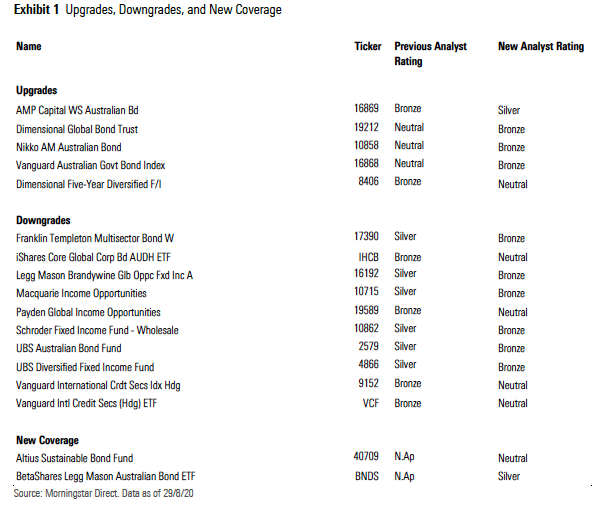Morningstar assesses the fixed income sector
By Penny Pryor

There was a lot of activity in Morningstar's latest review of the fixed income sector, with 15 changes to previous ratings of funds.
This was partly a result of a revision of the Analyst Ratings framework in October 2019. The framework now puts greater emphasis on the People and Process Pillars, and includes more explicit consideration of benchmark-relative performance across whole categories and fund fees.
"One important consideration was taking into account more explicitly fees," director of manager research at Morningstar, Tim Wong, says.
"It's a bit of a technicality but it's one clear difference ... different [fund] versions which have different individual fee levels can get assigned different ratings based on that."
Manager performance
There were five upgrades and 10 downgrades (see below).

Risk outlook
Morningstar also took a look at how fixed-income fund managers are faring in the current environment. Domestic managers that favour a longer duration view have had beneficial periods, however the report found their overall performance has been somewhat underwhelming.
"There's more to managing bond portfolios than the duration call," Morningstar said in the report.
Managers with a high exposure to credit risk, and which suffered earlier this year, have since seen some improvement as markets recovered.
"Towards second quarter this year, and even to the third quarter, because of all the stimulus that has occurred, and markets sort of digesting and reassessing what the landscape is like, conditions have certainly eased a lot," Wong says.
"Since then a lot of managers who have maintained a credit exposure have seen a reversal in fortunes."
Although longer duration positions may be hard to justify at the moment, Wong says that government and sovereign bonds should still be providing some sort of defensive exposure.
When it comes to passive versus active managers, in a low interest rate environment passive managers have an advantage due to their lower fees.
"On the fee front while ever yields are low and to the extent they stay lower ... fees can take a larger chunk of that return," Wong says.



